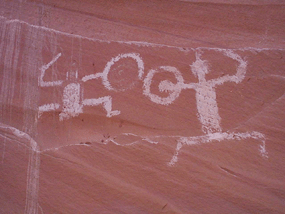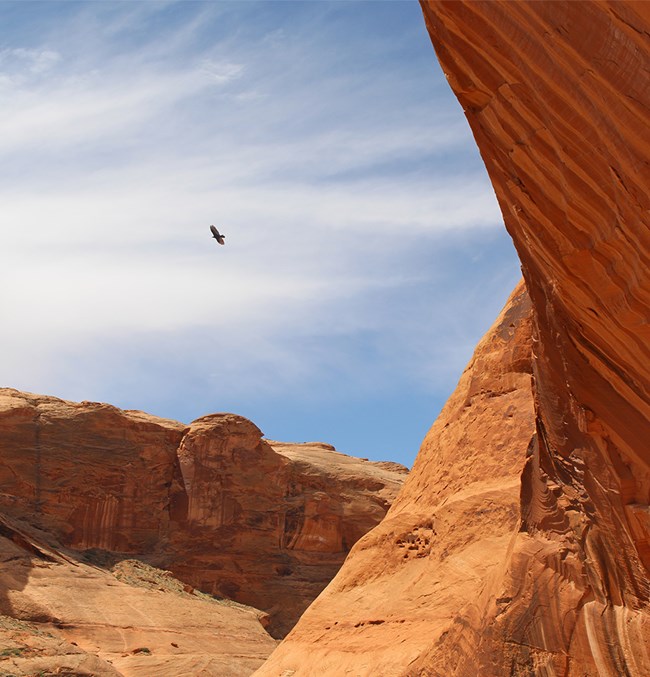Ancestral Puebloans
People have been coming to the canyon country around Glen Canyon for thousands of years. The earliest people known to have migrated into the area, around the end of the last great ice age, were hunters and gatherers. They became experts in the many plant, animal, and mineral resources of the region and would migrate through the area on a seasonal basis, depending on which resources were available in different locations during different times of year. Although they did not build permanent structures, they left behind rock writing, stone tools, and even basketry that is preserved in dry cracks and natural rock shelters.
Between 2000 and 1500 years ago, people in the region began to cultivate crops including corn, beans, squash and cotton, and live in larger, permanent villages supported by farming. These farmers are known as Ancestral Puebloans to archaeologists today. Famous village sites like Cliff Palace in Mesa Verde and Keet Seel in Navajo National Monument are examples of their impressive architecture.
The Ancestral Puebloan people lived across much of the Colorado Plateau until the end of the 13th century, when most Ancestral Puebloans migrated away from these areas. Just as their hunter-gatherer ancestors used migration as a strategy to thrive in the harsh landscapes of canyon country, the Ancestral Puebloans of the 13th century migrated to new homes. Climactic changes like drought may have led people to decide to move, or perhaps they were attracted to easier farming conditions and growing communities in other areas.
The Ancestral Puebloans migrated South and East, to places that are still home to their descendants today– the Rio Grande Valley, Western New Mexico, and Hopi mesas in Arizona. Other Ancestral Puebloan people may have remained on the Colorado Plateau, adapting their ways of life to the changing conditions and integrating with other cultures, such as the ancestors of the Ute and Paiute people who remain in the region to this day. Modern day descendant groups still remember the places their ancestors lived, and many see the cultural sites on this landscape not as abandoned, but as living places that are still relevant to their culture today.



